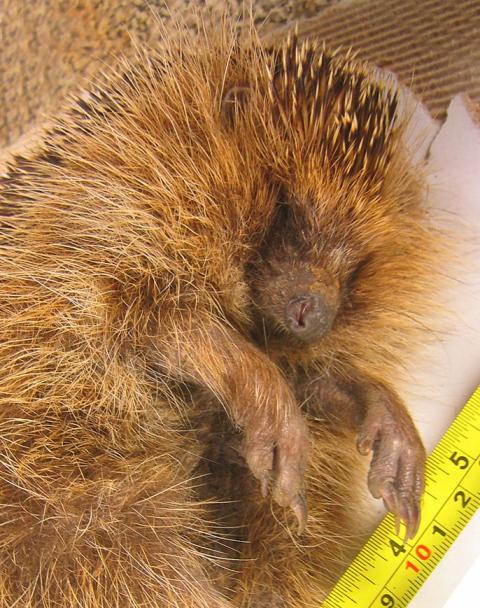European Hedgehog Mortality - Introduction

We have seen that pre-natal/intrauterine mortality rates are low in hedgehogs (about 3%) and it seems that post-natal mortality is higher. In a short paper to the Journal of Zoology in 1977, Pat Morris calculated that, based on a sample of 76 maternal nests, almost 20% of hoglets die before they're weaned at a month old. Morris' study also suggested that mortality in the nest wasn't evenly distributed; it particularly affected larger families. Overall, it is estimated that 70% of hedgehogs die within their first year; half of those during their first winter. July also appears to be a significant month for hedgehogs being killed on roads, particularly juveniles. In animals generally, it is relatively common to see a high mortality rate among yearlings, declining dramatically if an individual makes it past its first birthday. In the case of hedgehogs, adult mortality seems to decline to about 30% per annum.
Several studies have suggested that there's no significant sex-related difference in age-specific mortality. In other words, adults of one sex aren't any more likely to be killed than adults of the other. Hans Kristiansson found this in Sweden and Nigel Reeve something similar here in the UK. Jackson's studies on South Uist, however, suggested that females there were almost twice as likely to die in any given year as males. Jackson found that this difference was a result of females dying around the time their young reached independence, apparently from exhaustion, and that females rearing late in the season often did not survive the following winter. In his paper to the Journal of Zoology in 2001, Jackson concluded:
"The strong male bias in the adult sex ratio was probably caused by female mortality linked to the demands of litter rearing, especially attempting to rear two litters in a season."
Sources of mortality can be broadly grouped into one of four categories, each dealt with separately: Predators; Disease/Parasites; Environmental, which includes the perils of climate and hibernation; and Misfortune, which incorporates accidents and most detrimental human encounters. There are some cases of deliberate injuries caused to hedgehogs by humans, some fatal and some not, but these are thankfully rare and, based on newsmedia coverage, appear largely to be committed by teenagers. Most instances of hedgehogs injured or killed by human activity appear to be accidental. Injuries during fights appear rare, although some altercations can appear violent, but it is not uncommon for hedgehogs to present with swollen legs. In some cases swollen legs/feet may be a consequence of a break and hence should always be assessed by a vet or carer, but it often seems to be swelling associated with a bite that subsides of its own accord.
